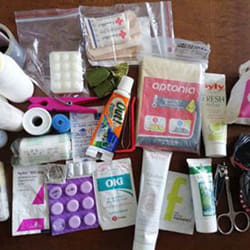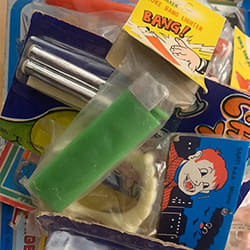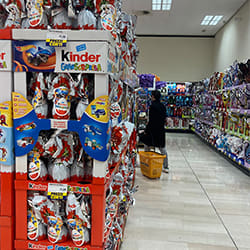His artistic production is marked by satire and political and cultural criticism.
His true identity is not known, and in the rare interviews he has given to the press he has said that even his family thinks he is just a painter.
His anonymity probably helped boost his popularity and today Banksy is one of the most famous and controversial artists of contemporary street art.
Banksy's work first appeared in Bristol around the end of the 90s, but there isn't much information about his early days.
Since it seems he moved to London around the year 2000, his stencils have become true icons of the global art scene.
London, greatly thanks to Banksy, has one of the most vibrant and exciting street art scenes in the world.
His distinctive artwork and social commentary has appeared largely and regularly in London, however, many of the original Banksy pieces in London are no longer visible (or barely visible) because they have been vandalised, whitewashed by the City Council or even taken off the walls to be collected.
“If Graffiti changed anything it would be illegal” is one of his artworks and it is located on a wall in Fitzrovia.
It features a mouse standing under the phrase written in red capital letters.
Shortly after the mural appeared, a local campaign was launched to save it from Westminster City Council, whose policy is to remove graffiti.
But before the Council could intervene, the mural had been covered with a protective layer.
Today, the mural can still be seen but most of it has been covered over with various signatures.
I visited an exhibition on Banksy’s art back in May 2021 here in London.
Before London, the exhibition had toured the world visiting Europe, the States and Australia, attracting hundreds of thousands of visitors.
Obviously, given the artist in question, it was an unauthorized exhibition and not curated by Banksy himself since his identity is still anonymous to this day.
I remember that the dozens of works on display included prints, sculptures, various objects, posters, and canvases which had come from private collections and had been mainly created at the end of the 20th century, the period of greatest characterization of the artist's works.
I recall that the installation were very well organised in a basement room of over one thousand square meters, in the Seven Dials area of Covent Garden.
The visit developed through black walls which housed writings and works and which stood out against the original brick arches of the structure.
It impressed me because it was the first exhibition I was visiting after the lockdown and it was included in the must-see events for the cultural revival of the English capital.
The Leake Street Banksy Tunnel is an underground tunnel about 300 meters long that passes under Waterloo Station and it is decorated with graffiti and murals.
If you like murals and graffiti and you are on holiday in London, don't miss the opportunity to visit this veritable graffiti mecca.
It is the only place in London where street artists can paint their work without the need for any permit.
Here you can admire dozens and dozens of wonderful murals and colorful graffiti.
The unique environment of the tunnel has attracted some of the city's most famous street artists, who have used it as a canvas for their art.
The turning point came in 2008, when Banksy organized a secret event here.
On that occasion Banksy invited artists from all over the world, who landed in the City to present their work and that’s how it got its name.
The tunnel was previously used as a garage for a bus company providing services across Europe, before artists turned it into a veritable graffiti mecca.
Since then it has become a popular destination for both locals and tourists, and today is undoubtedly one of the most photographed places in London.
Since it is absolutely legal to paint in the tunnel, it often happens to see artists and writers at work in broad daylight.
Although graffiti is completely tolerated in the tunnel, some types are prohibited, such as advertising graffiti and especially racist and sexist drawings.
Since it’s an ongoing process, the beautiful thing about the Banksy Tunnel is its continuous evolution. Some works remain on the walls of Leake Street for a long time, but in several cases the murals present are used as a new canvas for the new works.

Banksy Tunnel




























































